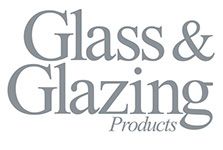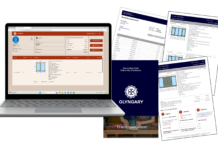
Launched 18 months ago, Framepoint, from software company Tommy Trinder, has reportedly been shaking up the software market, with its pay-as-you-go pricing model. From under £100 a month, window companies can access the firm’s Installer Award-winning Framepoint technology, to price and order their products, with no upfront cost and no tie in.
Chris Brunsdon, the company’s CEO, who is a former window installer, explained the thinking behind bringing the subscription concept to double glazing: “Historically you’ve needed a bag of cash and nerves of steel to invest in decent quoting software in our industry. You’d have to stump up thousands of pounds upfront, only to be faced with the trauma of getting it installed and configured, then the rigmarole of training and getting people to actually use it. And even then you’d find yourself paying for updates forever and a day. To manage all this on top of the day job of selling and fitting windows, was beyond most smaller window firms. We just felt there had to be a better way.”
Supplying software tools on a subscription basis (commonly known as ‘Software as a service’, ‘SaaS’ for short) is nothing new. SaaS is big business in the UK and the market for software delivered over the internet for a monthly fee is expanding rapidly. By 2025, the global spend on SaaS products is predicted to grown by a further $100bn. But, aside from saving on upfront investment, what other benefits does SaaS bring to the glazing industry?
“Speed is key,” said Chris. “With no complicated set up, the time to get going with SaaS products is so quick. Even if you’re not tech savvy, we can have you selling with Framepoint within the hour. In their first month with us, many subscribers report a saving of around 30 hours on quoting. That can be a game changer in a buoyant market when there’s not enough hours in the day.”
An emphasis on ease of use, driven by the fact that customers can give up and walk away anytime, is a common feature of SaaS, Chris explained. “In SaaS businesses, the responsibility for getting users to love the software remains with the software creator. If the product is not easy to use and quick to add value, customers are free to walk, and they will.”
This hard truth drove Tommy Trinder to invest heavily in designing an interface that is as user-friendly as possible; windows and doors can be free sketched on Framepoint, just like drawing on a pad. It’s point and touch to show off different colours, ironmongery and glass. And, one tap to overlay designs onto a photo of your client’s house.
“’If you can use an etch-a sketch you can use Framepoint’, as one of our customers put it,” Chris added. Updates and product development are another weapon that SaaS businesses have to hold on to customers. New features that make a subscriber’s life easier need to be shipped regularly in order to retain and excite clients.
“You really need to listen to installers,” said Chris. “They are at the sharp end and want tools that work in the real world. Last month, by popular demand, we shipped our Magic Paintbrush feature, for instance. This allows subscribers to recolour all items in a quote (aluminium, PVC or timber) in one click, and instantly see the results on the elevation. A simple device that wows customers and saves hours.”
But doesn’t the prospect of customers cancelling at any time make for a stressful existence? “I love the challenge,” said Chris. “Every month, I have to create so much value that all my customers want to renew, and a load more want to join. It definitely makes for a dynamic and exciting business.”
With an annual growth rate at over 150%, Tommy Trinder is clearly doing something right. Installers can find out more about Framepoint, and book a free demo, at www.tommytrinder.com.



